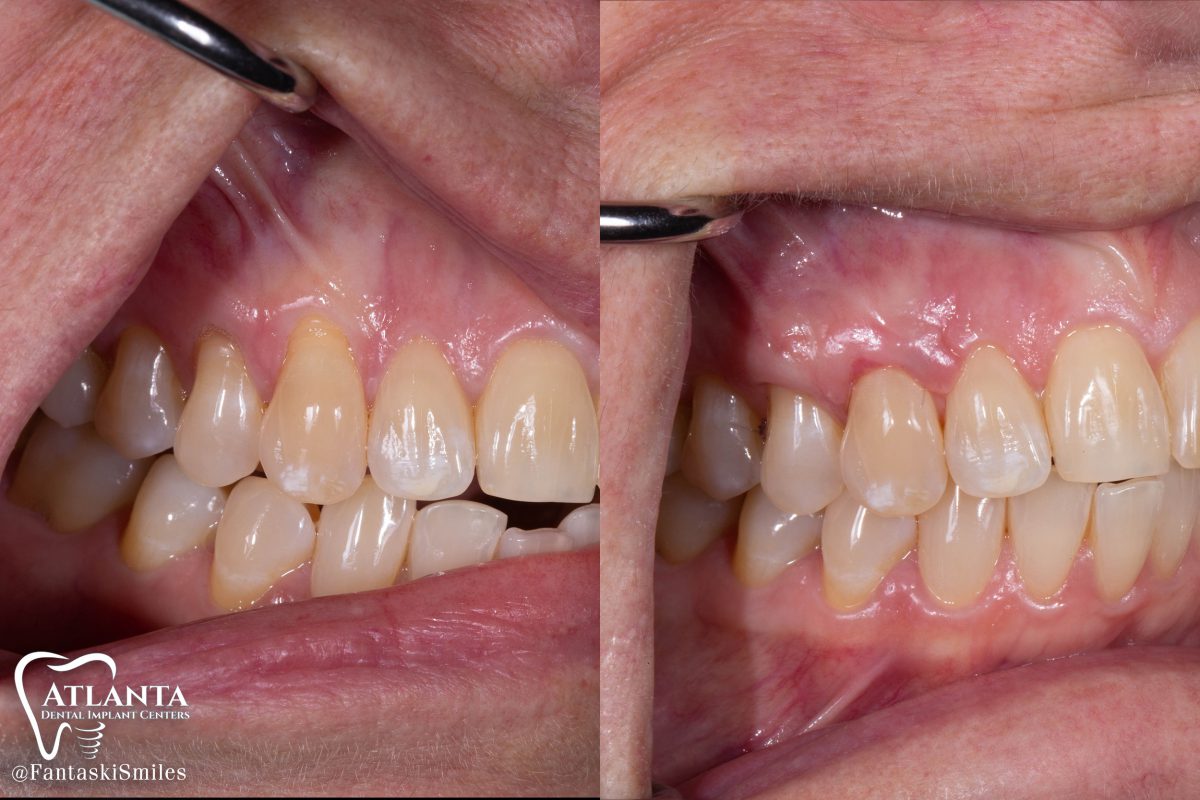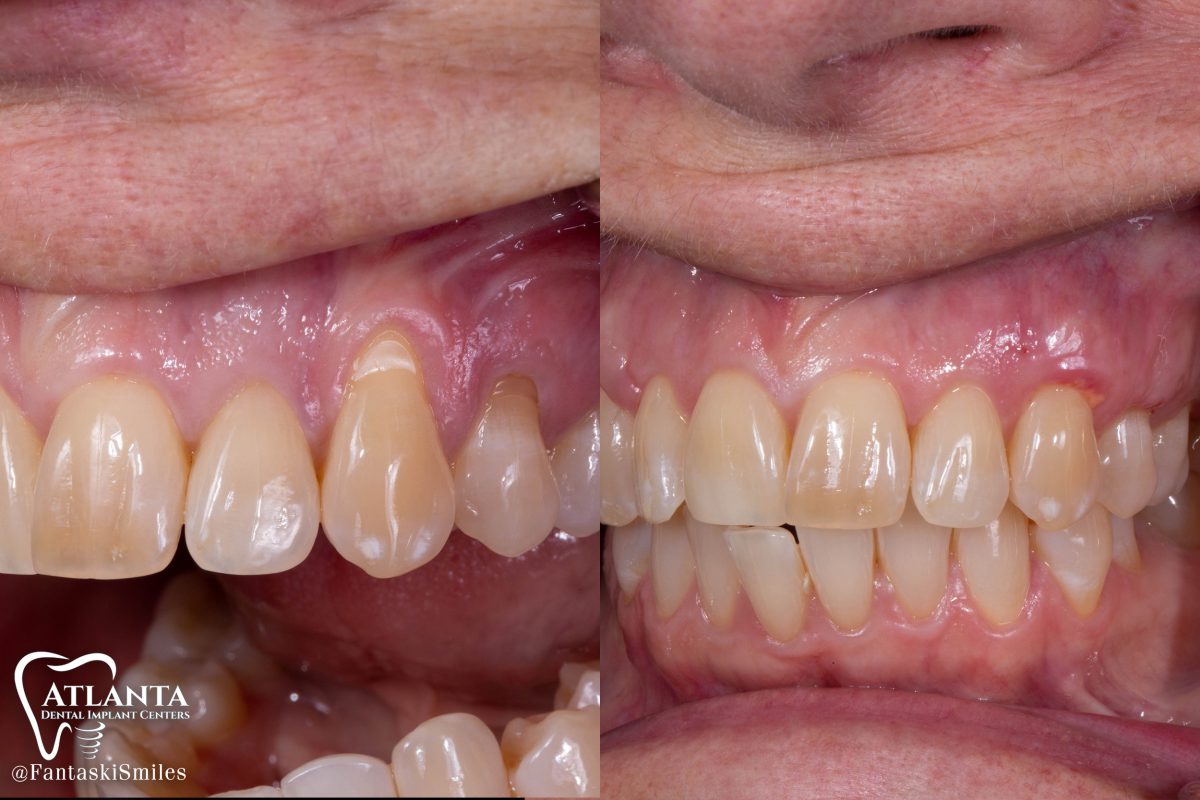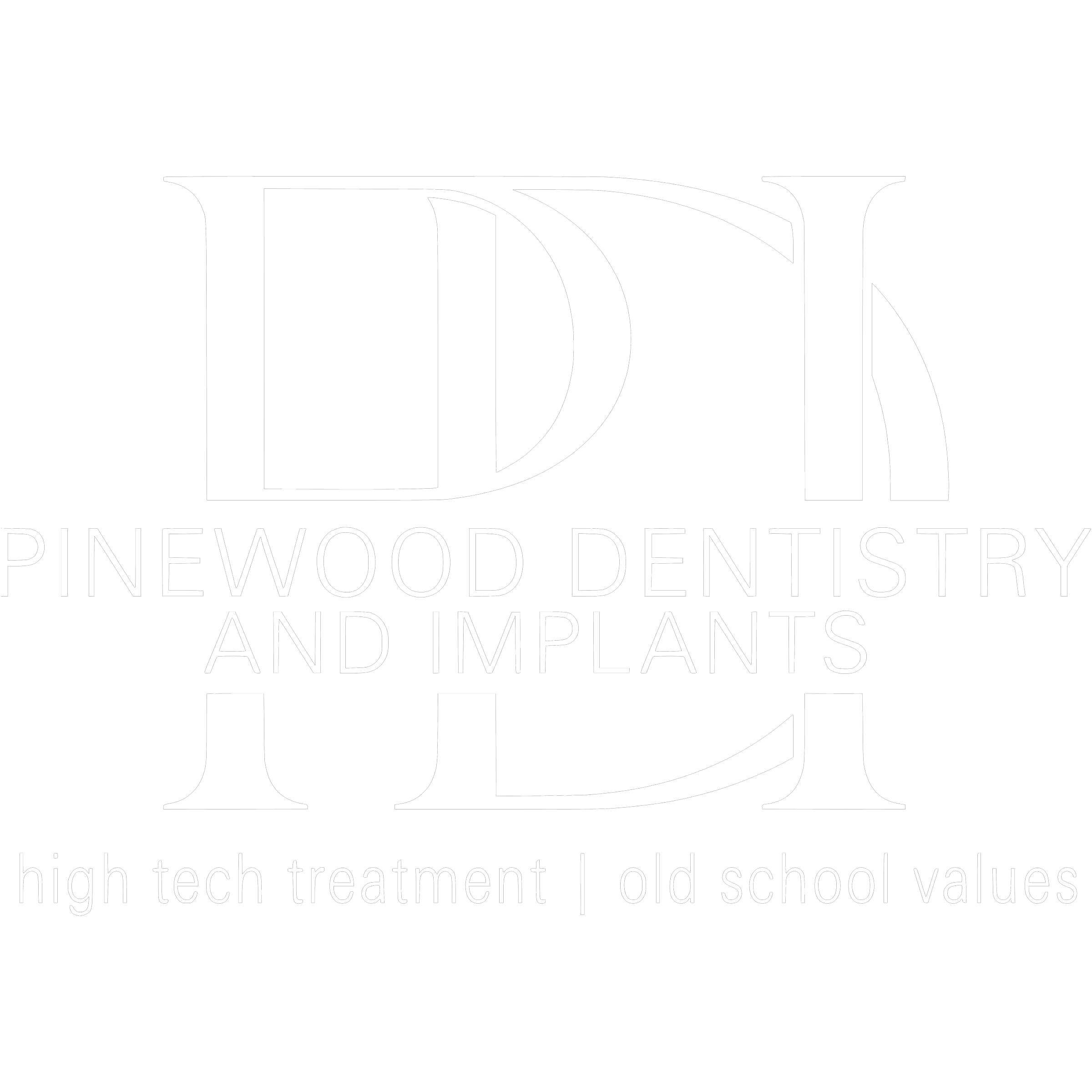Hard and Soft Tissue Grafting
In order to support teeth and implants, we need a solid foundation. So much of implant dentistry is similar to physics or construction – so thats the obvious metaphor here too. You can’t build a house without a foundation, and the foundation must rest on solid ground. The house is the teeth, the foundation is the hard tissue surrounding the implant, and the ‘solid ground’ is nice keratinized tissue sounding the foundation to keep it stable.
Bone Grafting
Bone grafting is a very cool process, and there are many experts that can speak on the subject in more detail than we will get in here. Essentially, we can grow back bone that has been lost or is being lost (in the socket when a tooth comes out) or we can grow bone back to where it was prior to the loss of a tooth/teeth. I break grafting down into two categories for patients
- Ridge Preservation – We are going to place graft to keep the ridge where it is now. Something happened, a tooth or teeth have to go, and we are just making sure the body keeps the volume of the ridge the same. This turns over fairly fast, since its a completely contained ‘cavity’ in the bone, so we anticipate it will remodel in 3-4 months.
- Ridge Augmentions – There are various things that can cause bone loss. Usually bone loss is caused by infection and biological factors or just time. If a tooth comes out, and it is not grafted, the bone will remodel and volume will be lost. If an infection gets into the bone, it will find the ‘path of least resistance’ out of the bone and will perforate out one of the walls. Usually the buccal.
Once we know there is a ‘defect’ – either a hole in the bone, or just deficiency from how large the ridge’s ‘boney envelope’ would have been to support a healthy dentition, we know we have to augment the bone. Bone thankfully will heal if given the right environment, and will grow back if given the right conditions. But bone grows slow, so we have to use biologic materials such as membranes to keep the soft tissue from out competing the bone cells. This process is commonly called “Guided Bone Regeneration” or GBR for short. Essentially, particulate graft is placed, and then a membrane is placed over it to either patch a hole, or create a ‘wall’ to provide structure for the bone to regrow. Since these are more complex, they take longer to heal and for the bone to fully turn over. We usually target 6-9 months.
Soft Tissue or Gum Grafting
So we need ‘solid’ ground to support our foundation. Sadly, in the process of building a good ‘foundation’ or undergone bone augmentation, we displace the soft tissue. We need the graft to be fully submerged by the soft tissue to heal, so when we stitch it all together sometimes we loose some gums and soft tissue grafting is required. We also tend to loose soft tissue over time.
I always tell patients we have two types of tissue in your mouth. The kind on the roof of your mouth, and the kind lining the inside of your cheek. If you take a sharp tortilla chip and poke those tissues, they react differently. The cheek tissue (mucosa) can ulcer, and may rip. The palate tissue (keratinized tissue) just kind of shrugs it off. You need that hard tissue, keratinized tissue, to attach around your teeth as well as implants. If you didn’t have a lot to begin with, and were an aggressive brusher, you may need to have this tissue augmented.
Soft tissue grafting can be divided into two big categories, free gingival grafting, and connective tissue grafting. Both can involve transferring tissue from the roof of your mouth to areas where it is needed. Thankfully, our body grows back this type of tissue just like bone, so the palate will heal, and the graft will encourage surrounding tissues in the transplant recipient site to also grow thicker and harder. Borrowed tissue is called autogenous grafting, and includes free gingival grafts as well as autogenous connective tissue grafts (CTG). The final type of gum grafting is non-autogenous connective tissue grafting, which involves biologic materials or donated tissue matrixes. Essentially, this is ‘graft in a box’ and it eliminates the need for a donor surgical site. It does handle differently and can be site, patient, and procedurally more tricky to deal with, but can be a great option for patients to augment their gum tissue.
Gallery: Soft Tissue Grafting

Connective tissue grafting 
Connective tissue grafting
Full Arch Hybrids
A quick note for full arch hybrids/All-On-4 procedures and grafting…
Most of the time, when we do a full arch case, we are trying to eliminate the need for extensive grafting prior to placing our implants. We place the implants in bone that exists once the teeth come out. We would do any bone grafting or gum grafting during that single surgery, and try to put back everything we take away. But the goal of angling implants and trying to immediately load the implants is to utilize the good bone that is already there, not wait for the grafts to heal prior to placing the implants. Full arch dentistry is a much different mindset than single tooth dentistry, and single tooth implant dentistry too. But with the advent of things like zygomatic implants, we try to do our best to work AROUND grafting, since it just adds so much time before patients can get their teeth.

